A look back at the first North American gay and lesbian history conference
This year’s Pride month marks the 40th anniversary of the first North American history conference dedicated to the recovery of LGBTQ2S+ histories. The Wilde '82 History Conference took place June 30 to July 3, 1982, at Toronto Metropolitan University (TMU), then known as Ryerson Polytechnical Institute. The event brought together gay and lesbian theorists and historians from across North America to share research on the LGBTQ2S+ community.
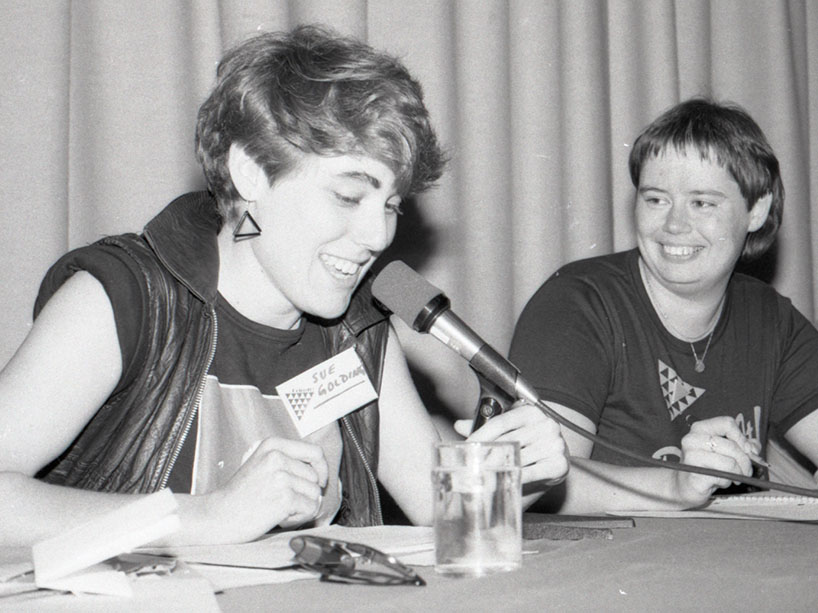
‘Body Politic’ collective members Sue Golding and Chris Bearchell. Photo by Gerald Hannon, courtesy of The ArQuives.
“Wilde '82 was one of the earliest manifestations of collective gay and lesbian studies,” says English professor Craig Jennex who is developing a digital exhibit about the conference in collaboration with fellow English professor Jason Boyd and the Centre for Digital Humanities (CDH) at TMU. “Scholars, community historians, and activists convened at Ryerson and built a foundation for what becomes a hugely important field of study.”
That conference presenters were critically important in the development of queer studies as an academic discipline can not be underestimated. Topics covered shared a common theme of homosexual identity as culturally constructed.
“The papers ‘The Making of the American Homosexual Community,’ ‘Where Gay People Come From,’ ‘The Invention of the Homosexual,’ and ‘The Making of the Modern Homosexual’ all focus on how the way we classify and categorize sexuality is not innate or naturally occurring,” says Jennex. “Those are particular subject positions that become possible and logical in specific moments.”
It is this shift in thinking about gay identity that becomes a hallmark of queer theory and subsequent understandings of queerness, says Jennex.
Commemorating the 100th anniversary of Oscar Wilde's visit to Canada, the Wilde '82 conference was organized by the Canadian Gay Archives (now the The ArQuives (external link) : Canada's LGBTQ2+ Archives) and a part of Pride events that year.
“We want to recover some of the early figures of gay and lesbian studies, who I think have largely been sidelined, if not forgotten, and provide information about the formative years of gay and lesbian studies and queer studies,” says Jason Boyd, who is also the director of the Centre for Digital Humanities. “This is really important reclamation work.”
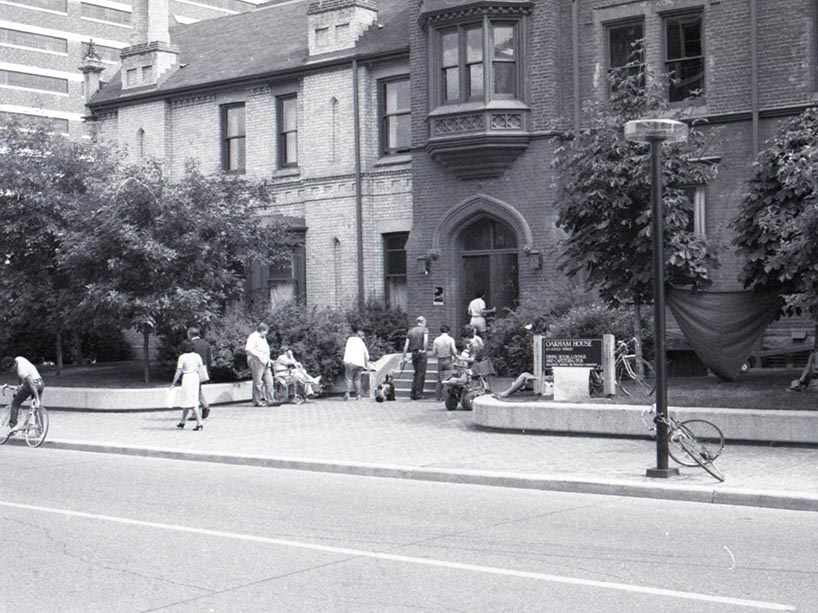
Wilde '82 Participants Outside Oakham House. Photo by Gerald Hannon, courtesy of The ArQuives.
Oscar Wilde a figure of resistance
Boyd, who is also an Oscar Wilde scholar, believes the conference was named after the celebrated poet and playwright by chance. “The centenary of Wilde’s 1882 North American tour was serendipitous. Oscar Wilde was one of the first gay men to be convicted for homosexual offenses and jailed for two years with hard labour. He became seen as a martyr to state oppression of sexual minorities and has become an icon for the gay community.”
In fact, Boyd points out that the conference was very likely spurred in part by tensions simmering between the LGBTQ2S+ community and the police at the time, with the Bathhouse raids having sparked major protests the year before, having initiated a modern gay rights movement in Canada.
Important community historian Ed Jackson wrote about the event in The Body Politic (Sep 1982) that Pride events created excellent opportunities for participants to connect and “develop political strategies to combat the latest wave of antigay persecution”.
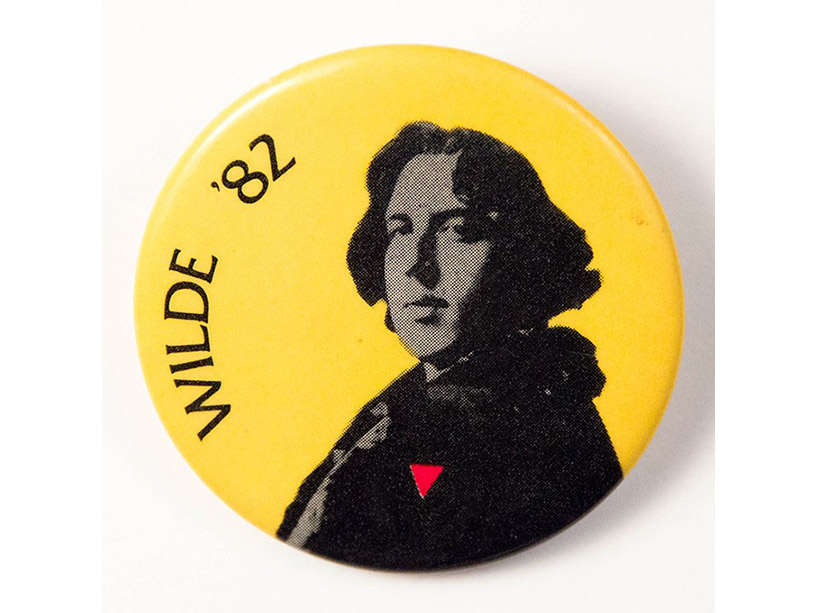
Conference button with an image of Oscar Wilde wearing a pink triangle. “Wilde '82” courtesy of The ArQuives Digital Exhibitions (external link) .
A burgeoning field of study: Wilde '82 makes history
The Wilde '82 History Conference should be remembered because it brought together academics, community historians, and activists who, Jennex says, became pivotal in the development of queer studies. In the same summary on the conference for The Body Politic, Jackson wrote that participants “witnessed the consolidation of a new ‘school’ of gay history” that saw homosexuality not as a fixed biological phenomenon but as a modern social construct.
Boyd observes conferences like Wilde '82 were the necessary first step towards early publications in queer studies – such as the anthologies Essays on Gay Literature (1985) and Hidden from History: Reclaiming the Gay and Lesbian Past (1989).
“There was a critical mass of scholars who were working on gay and lesbian history and literature, but they were all siloed,” he says. “There was a realization that this work could coalesce into a field of inquiry.”
TMU a site of gay and lesbian resistance
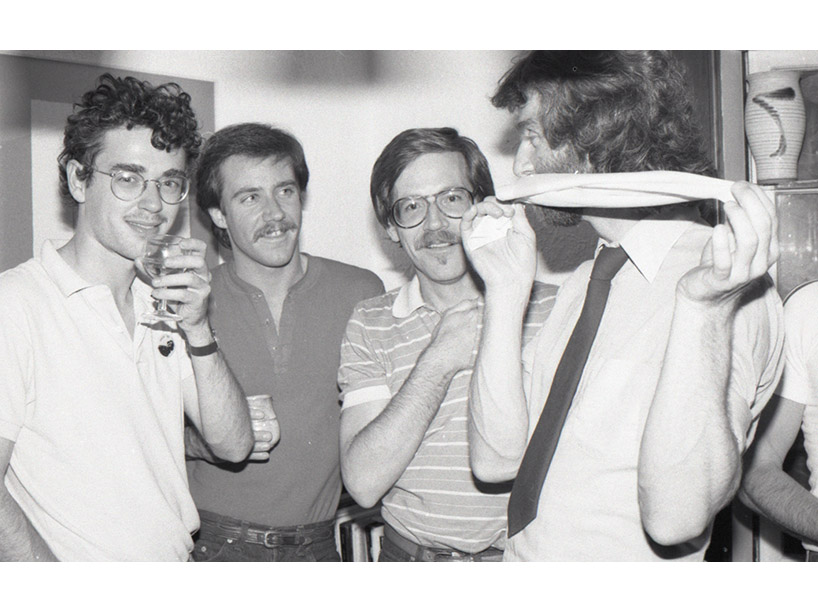
Conference participants Chris Lea, Gram Campbell, former TMU librarian Alan Miller, and James Fraser. Photo by Gerald Hannon, courtesy of The ArQuives.
As for why this event took place at Ryerson Polytechnical, Jennex believes it was related to the institution's proximity to Toronto’s gay village, home to Canada's largest gay community. He reminds us that in the 1970s and 1980s, Toronto was an important site of lesbian and gay politics and organizing. He is also exploring a connection to a long-time ArQuives volunteer.
“Ryerson Polytechnic was the site of many LGBTQ2+ events ever since the lesbian and gay liberation movement started in Toronto,” he shares. “I suspect this has to do with its location, given it’s so close to lesbian and gay-oriented spaces on Church and Wellesley. But there were also people involved in lesbian and gay liberation politics who were affiliated with Ryerson. Alan Miller, a former senior Ryerson Polytechnic library reference technician, for example, was one of the organizers of Wilde '82 and has been involved in lesbian and gay activism for decades.”
Alan Miller explains that Ryerson Polytechnical was home to a number of gay and lesbian groups from at least 1977, several ‘out’ profs in the 1980s, and that some of the first (non-credit) queer courses took place at the institution. “My manager at the Ryerson Library allowed me to maintain a research guide on Sexual Diversity Studies, now LGBTQ+ Studies Research Guide,” says Miller.
Research assistant and English M.A. student Nadia Ozzorluoglu who is working with Jennex and Boyd on the digital exhibit, believes another reason Ryerson Polytechnical was the host of not only the conference but all of the “Doing It!” Pride events was its proximity to Allan Gardens, one of Oscar Wilde’s North American tour stops and a site closely connected to queer life and resistance. Ozzorluoglu notes that conference participants walked together to the Allan Gardens to commemorate Wilde’s visit.
“One thing that Wilde '82 did was situate Toronto and Canada as a site where questions about lesbian and gay lives were being unpacked and interrogated,” says Jennex.
Centre for Digital Humanities exhibit
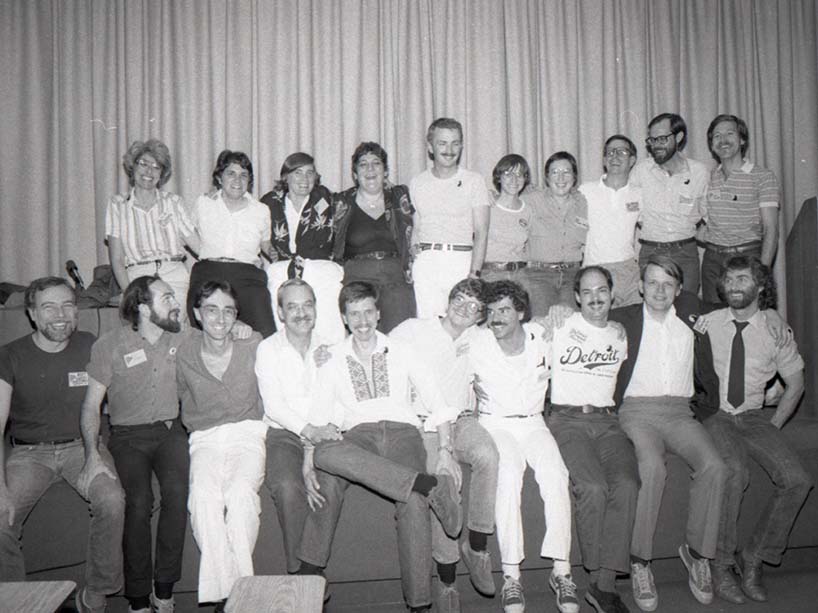
Wilde '82 conference participants. Back row, from left: Liz Kennedy, Karla Jay, Frances Doughty, Madeline Davis, Barry Adam, Martha Vicinus, Gayle Rubin, Michael Lynch, James Steakley, Alan Miller. From row, from left to right: Bert Hansen, Bob Gallagher, Bruce Russell, Jonathan Ned Katz, Greg Sprague, George Chauncey, Alan Bérubé, Joe Interrante, Beert Verstraete and James Fraser. Photo by Gerald Hannon, courtesy of The ArQuives.
The digital exhibit, supported by the Centre for Digital Humanities, will include current research, photographs, audio recordings, and archival materials related to the event, some of which can be found in TMU’s own library archives.
Slated to launch in 2023, the exhibit supports the objective of the centre: to engage in collaborative transdisciplinary scholarship, research, and creativity (SRC) at the intersection of the material and the digital.
“The website we hope to create will provide information about the presenters at the conference and explore their careers, their research and how that research made it into the published scholarship,” says Boyd.
Participants of Wilde ’82 came away feeling it was a groundbreaking event, shares Miller. “We managed to pull together many important community-based historians with a lot of academics.”
The 40th anniversary of this pivotal event serves to remind us of the importance of reflecting on LGBTQ2S+ resistance, activism and community building, and how recovering the past is an important part of the LGBTQ2S+ movement and its future.
The conference also offers a model for community-engaged scholarship today, says Jennex. “It’s a great reminder of what is possible when activists, academics, community historians, and archivists bring their different skill sets together for the project of queer liberation.”
Related story
Queer activism’s history in Canada shows a path forward